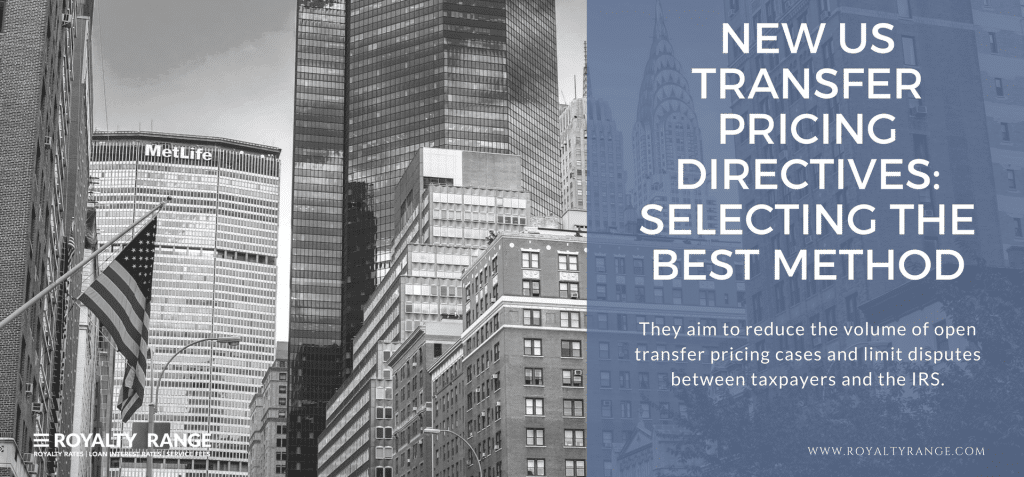New US transfer pricing Directives: selecting the best method

Kris (Kestutis) Rudzika |
April 16, 2018

Five new transfer pricing Directives were released by the Internal Revenue Service (IRS) Large Business and International (LB&I) Division on January 12th, 2018. They aim to reduce the volume of open transfer pricing cases and limit disputes between taxpayers and the IRS. In a recent blog, we outlined and discussed the IRS’s five new transfer pricing Directives .
The third Directive is titled ‘Instructions for LB&I on Transfer Pricing Selection and Scope of Analysis – Best Method Selection’. It instructs LB&I about limitations of scope for transfer pricing analysis. It is to be used when assessing LB&I taxpayers (with assets of $10,000,000 or more) who submit forms 5471 and 5472 (plus extensions) with their annual tax return. It only applies where the taxpayer has provided a report about their chosen transfer pricing method, including an analysis that supports their choice, within the required timeframe.

Kestutis Rudzika, Director
What does the new Directive say?
The new Directive outlines the importance of selecting and applying the most appropriate transfer pricing method to achieve arm’s length conditions. The taxpayer must produce transfer pricing documentation that shows their analysis of the available comparables data when choosing and applying a transfer pricing method. The Directive states that examiners must not simply reject the taxpayer’s chosen method without thorough review, as this “protracts the examination timeline and diverts resources.” Instead, they must thoroughly analyze the taxpayer’s method selection and, if they conclude that changes are needed to the application of the method, these should be developed and documented as early on as possible. Changes may relate to factors like tested party data or comparable company selection. Such changes can cause adjustments to the determination of the arm’s length.
If the examiner determines that an alternative method would result in a more reliable arm’s length measure, they must undergo a formal approval process to change it. This involves the examiner submitting a recommendation, including a thorough analysis, to the Treaties and Transfer Pricing Operations (TTPO) Transfer Pricing Review Panel. The review focuses on why the taxpayer’s chosen method is not suitable, whether it can be adjusted to make it more reliable and, if not, which method would be better. It looks at whether the taxpayer’s choice of transfer pricing method was reasonable, based on the data they had access to or reasonably could have had access to. If approved, the examiner can go forward with their own analysis, using a different method.
Why was the third Directive introduced?
The Directive is designed to reduce disputes between the IRS and taxpayer about the best method selection for transfer pricing. Previously, examiners were able to simply reject the taxpayer’s chosen best method. Under the new Directive, they have to complete a formal review process to do this.
What does this mean for taxpayers?
The benefit of the third Directive for taxpayers is that their transfer pricing analysis cannot just be rejected by the examiner. There has to be a specific and valid reason for them doing so. However, an examiner can still easily make changes that relate to factors like tested party data or comparable company selection, and such changes can cause transfer pricing adjustments. This does mean that it’s more important than ever for the taxpayer to access high-quality and relevant comparables data for their transfer pricing analysis from sources such as RoyaltyRange, and to make sure that their chosen methodology is recorded clearly and in detail, including why it was chosen.
It is important to note that, if a taxpayer identifies a best method but does not explicitly analyze and explain this choice, then they could incur penalties if the adjustment of the transfer pricing method results in amendments to tax that exceed the penalty threshold.
A taxpayer is allowed to use an unspecified method as their chosen best method, but this may result in more rigorous examination by the IRS. They will need to prove that none of the available specified methods would have resulted in appropriate arm’s length conditions. To conclude that an unspecified method is the “best method,” the taxpayer has the burden to affirmatively establish that none of the specified methods in the regulations was likely to result in a price that would clearly reflect income.
Accessing comparables data for transfer pricing documentation
When conducting transfer pricing analyses, organizations around the world use the RoyaltyRange databases to access high-quality, fully analyzed and relevant comparables data. This ensures that they can choose the most suitable transfer pricing method for their study. If you want to find out more about our database, contact us today or request a subscription.
You can use this article with reference to RoyaltyRange website.
This could hyperlink to the ‘Five new transfer pricing Directives are released in the US’ blog.
Request One Search
We will perform the search and deliver the initial results within hours, at no cost.




